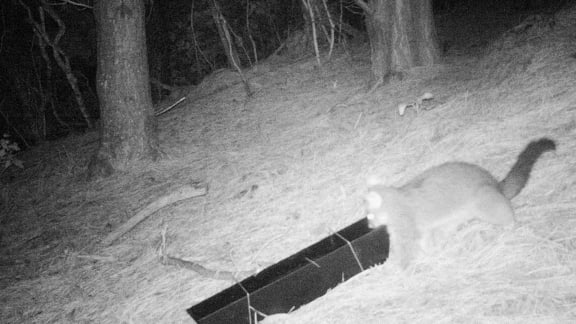By Alison Ballance

A brush-tailed possum is snapped by a motion-activated remote camera as it investigates a tracking tunnel in bush near Zealandia Sanctuary in Wellington. Photo: Victoria University of Wellington
Calling all citizen scientists. A wildlife biologist is hoping keen members of the public with a few minutes to spare will be able to help him identify wild animals in photographs taken by remote cameras. The animals include possums, rats, mustelids, as well as the occasional native bird – and a fair number of photos that don’t contain any animals at all.
“That is the blessing and the curse of using this technology,” says Heiko Wittmer. ”We put these cameras out there, which is a lot of work in itself … but they also take a lot of photos. And because they’re motion activated sometimes even just having the wind moving some branches will trigger a photo.”
Victoria University of Wellington’s Heiko Wittmer and research assistant Victor Anton deployed remote cameras at 40 locations around Wellington’s Zealandia sanctuary between March and July 2014. The resulting 65,000 images are now available for identifying by members of the public at www.identifyanimals.co.nz Heiko says that they need every photo checked as many times as possible, and points out that people should ignore the message currently posted on the web site which says that 100% of the photos have been checked. They have only been checked once, and Heiko would like to see them checked many more times. The team will be redeploying the cameras in late February 2015, when more images will be available for identifying.

A mustelid (probably a stoat), possum and deer snapped on remote cameras around the edge of Zealandia Sanctuary. Photo: Heiko Wittmer / Victoria University of Wellington
The project is part of a broader study looking at the potential impact of introduced predators on native wildlife that is moving out of the security of the fenced sanctuary into the surrounding bush and urban areas.
The Polhill community trapping effort is part of the Halo project, which aims to encourage predator trapping around the Zealandia sanctuary, and other Halo project studies have been looking at the possible impact of domestic cats.
Listen to Heiko Wittmer talking about his early work using remote cameras to study pumas in Chile and the United States, as well as the current project around Zealandia sanctuary.

